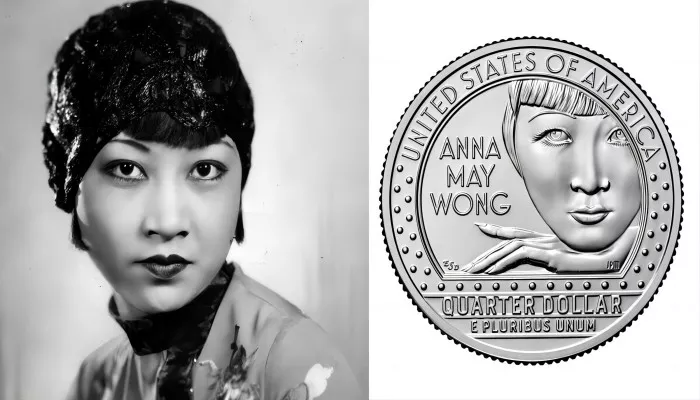“Not Your China Doll”: Anna May Wong’s Resilience and Legacy
About two decades ago, Katie Gee Salisbury stumbled upon a captivating photograph that would profoundly impact her for years to come. The image, depicting a chic and glamorous Chinese American woman amidst a crowd of parade-goers, stirred Salisbury’s curiosity. As a fifth-generation Chinese American with deep roots in Los Angeles’ Chinatown, Salisbury was intrigued by the woman’s identity. On her first day as an intern at LA’s Chinese American Museum, a curator revealed that the woman in the photograph was none other than Anna May Wong, Hollywood‘s pioneering Asian American movie star of the 1920s and ’30s.
Salisbury’s fascination with Wong prompted her to delve deeper into the actress’s life, ultimately culminating in her latest book, “Not Your China Doll: The Wild and Shimmering Life of Anna May Wong,” released on March 12. Recognizing the dearth of Asian American female perspectives in previous biographies, Salisbury sought to present a nuanced portrayal of Wong’s life, moving beyond the prevailing narrative of tragedy and victimhood.
While Wong encountered numerous challenges in Hollywood due to entrenched racism, Salisbury emphasizes the actress’s resilience and agency in navigating an industry rife with discrimination. Despite being relegated to stereotypical roles and often losing opportunities to white actors in yellowface, Wong carved out a distinguished career marked by notable triumphs, such as her groundbreaking lead role in “The Gallery of Madame Liu-Tsong.”
Salisbury’s personal and familial experiences as an Asian American woman informed her approach to recounting Wong’s story. Drawing parallels between her own encounters with racism and Wong’s struggles, Salisbury sought to imbue the narrative with empathy and understanding. By placing herself in Wong’s shoes and analyzing pivotal moments in the actress’s life, Salisbury offers fresh insights into Wong’s motivations and challenges.
The title of Salisbury’s book, “Not Your China Doll,” reflects her desire to challenge stereotypes and reclaim agency for Asian American women. Rejecting the conventional portrayal of Wong as a passive victim, Salisbury celebrates the actress’s defiance and resilience in the face of adversity. Through meticulous research and analysis, Salisbury paints a multifaceted portrait of Wong, highlighting her contributions to cinema and her enduring legacy as a symbol of strength and inspiration.
In a conversation with CNN, Salisbury discusses the significance of Wong’s legacy in contemporary Hollywood and reflects on the progress made in representation for Asian American actors. While acknowledging the strides made in recent years, Salisbury underscores the need for greater diversity and inclusion in the industry. By amplifying Wong’s story, Salisbury hopes to inspire future generations of Asian American actors and filmmakers to pursue their dreams and challenge prevailing stereotypes.
As Hollywood undergoes a transformation with increased representation and opportunities for Asian American talent, Salisbury believes Wong would be both gratified and astonished by the progress made. Reflecting on Wong’s enduring legacy, Salisbury emphasizes the importance of recognizing her contributions to cinema and celebrating her resilience in the face of adversity.
Salisbury recommends exploring Wong’s filmography, including classics such as “Piccadilly” and “Shanghai Express,” to appreciate her talent and impact on cinema. By revisiting Wong’s films, Salisbury invites audiences to rediscover the actress’s artistry and recognize her enduring legacy as a trailblazer for Asian American representation in Hollywood. Through “Not Your China Doll,” Salisbury pays homage to Wong’s indelible mark on cinema and reaffirms her status as a cultural icon for generations to come.
https://www.rnada.com/archives/12173
https://www.rnada.com/archives/12168
https://www.rnada.com/archives/12164

